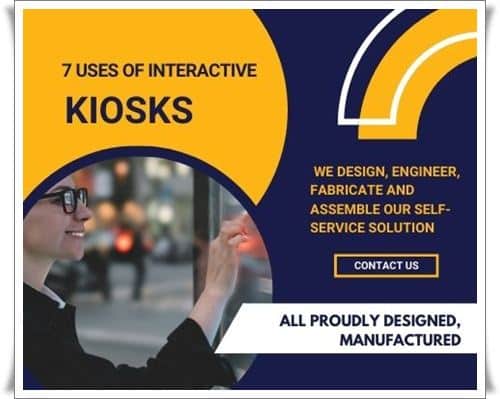
A kiosk is a small, temporary, stand-alone marketing booth. It was an information stall for whatever purpose it served. Still, these kiosks have also followed the technological fashion of the modern world, resulting in the creation of interactive kiosks that people can find in almost every city today. The most common components of interactive kiosks are: The screen monitor displays the information. A computer is attached to the back that determines the kiosk’s purpose. And the enclosure.
Manufacturers, such as meridiankiosks.com, understand that a successful kiosk can market a product or serve its purpose effectively, which is why they continue to improve the design and construction of these. It consists of the overall aesthetic, durability, ergonomics, and regulatory compliance depending on its location and the interface.
Standard features of these interactive kiosks that allow users to utilize their purpose include external keyboards for user data input, barcode and QR scanners, card readers, printers of multiple types, and an internet connection via Wi-Fi or using an ethernet cable. Business owners and manufacturers may include any additional feature they deem helpful to their demographic. You can visit tech sites that provide information about interactive kiosks to understand these features better.
There are different types of kiosks that serve other purposes, whether indoors or outdoors. The physical attributes of these kiosks allow them to be easy to use for anybody but durable to be used a hundred interactions a day. The software has a security system controlled remotely to protect user data and direct the kiosk’s function to serve its purpose. Thus, this article will give you the seven uses of interactive kiosk:
Telekiosk: a communication tool
In 2001, a tech company introduced telekiosks around the United Kingdom as a successor to the telephone booth. The telekiosks included e-mail, fax, SMS, and telephone service. For convenience, they are in shopping centers, transport terminals, motorway service areas, and airports. Communication became accessible to the public. But they are rarely seen anymore.
However, the use of telekiosks is being encouraged in Africa and some parts of Asia, where people have little to no access to communications technology. It attempts to address the digital divide between rich and developing nations.
Financial Service
Usually, financial transactions require a bank teller. For some customers, it is more complex and takes longer to perform. Thus, financial services kiosks provide convenience for bank transactions. And so, automated teller machines are sometimes called ‘bank-in-a-box.’ Bank clients can withdraw and deposit money into their accounts without needing to wait in long lines or wait for hours.
Photo Kiosk
A photo kiosk is an example of an interactive kiosk. It lets users print pictures from their digital images. There are two major classes of photo kiosks: the first one is the Digital Order Station, and the second one is Instant Print Stations. Digital Order Stations allow users to place an order for print and photographic products. They often do not handle payments and may or not support instant printing.
On the other hand, Instant Print Stations have internal printers that instantly create photographic prints for customers. They also handle payments. They are in public locations such as hotels, schools, and airports.
Internet Kiosk
It is a terminal that gives the user access to the public internet. They are seen in hotel lobbies, medicinal waiting rooms, care facilities, airports, or apartment complex offices, providing people quick access to e-mail and internet pages. Some internet kiosks are free. At the same time, some are similar to vending machines with a credit card or swipe a bill acceptor.
Ticketing
Unattended ticketing kiosks can be handy in many places. For example, in cinemas, several movie theatre chains have specialized machines that dispense tickets the customers paid for or pick up tickets they purchased online. Amusement Parks also make use of unattended outdoor ticketing kiosks.
Menu Kiosks
Restaurant and fast-food chains added kiosks to their establishments, in addition to cashiers, to decrease the waiting time for guests and customers. It is highly visual and includes a detailed list of their menu for easy and fast transactions.
Building Directory and Wayfinding
Large public and corporate buildings use interactive kiosks that help visitors navigate their facilities. Huge shopping malls put directories or wayfinding kiosks for easy navigation for clients. These help them locate cinemas, supermarkets, specific brand stalls, food courts, bathrooms, and even them car parking.
Corporate buildings have directory kiosks on the ground floor, so visitors know which level to visit. For instance, it’s a ten-story building, and the visitor is looking for a particular agency or office in the building. They can find their way and know the specific floor by looking at the wayfinding kiosk.
Conclusion
Kiosks are helpful in many ways and in many industries. They are cost-effective and easy to maintain. Additionally, kiosks are continuously evolving. Tech companies are developing more specialized kiosks. And so, their practical uses and applications are also improving and increasing.
Leave a Reply
You must be logged in to post a comment.